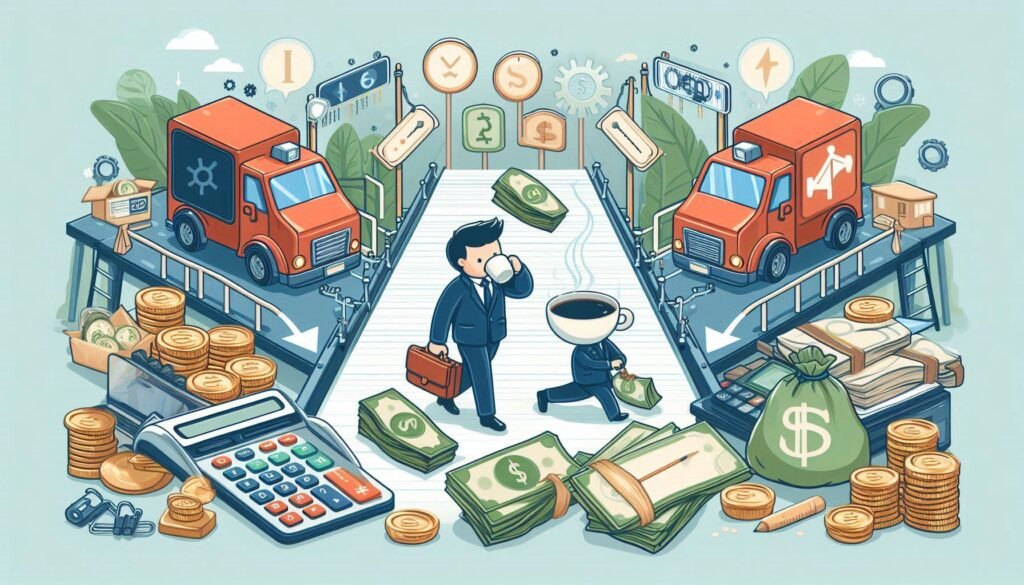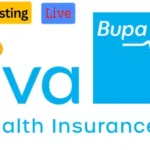In today’s rapidly evolving financial landscape, building multiple streams of income has become essential for long-term success. Among the most popular strategies are side hustles and passive income. However, deciding which is the best fit for you can be overwhelming, especially when both have their advantages and drawbacks.
In this blog, we will help you understand both concepts by diving deep into the pros and cons of side hustles and passive income. We’ll also guide you in determining which strategy aligns with your personal goals and lifestyle. Whether you’re looking for extra cash in the short-term or long-term financial independence, this post will give you valuable insights to help you make the right choice.
What is a Side Hustle?
A side hustle is any secondary income stream you pursue while still working a full-time job. It’s the ideal way to boost your income without making drastic changes to your main career.
Examples of Side Hustles:
- Freelance work (writing, graphic design, web development)
- Selling handmade products or services
- Driving for rideshare apps like Uber or Lyft
- Tutoring or teaching online courses
- Running an online store (eCommerce, dropshipping)
Advantages of Side Hustles:
- Immediate Cash Flow – Side hustles provide an additional stream of income, often with a quicker return.
- Flexible Hours – You can manage how much time you dedicate based on your availability.
- Skill Enhancement – Many side hustles help you develop valuable skills that can benefit your primary career.
Disadvantages of Side Hustles:
- Time-Consuming – Juggling a full-time job and a side hustle can lead to burnout.
- No Passive Income – Side hustles typically require ongoing active effort, unlike passive income models.
- Limited Scalability – Earning potential is often limited by how many hours you can work.
What is Passive Income?
Passive income refers to money earned with little or no ongoing effort. Once set up, passive income streams generally don’t require a significant amount of time or effort to maintain.
Examples of Passive Income Sources:
- Rental Income – Owning property and earning rent.
- Stock Dividends – Investing in stocks that pay regular dividends.
- Affiliate Marketing – Earning commissions by promoting other people’s products or services.
- Creating Digital Products – Selling eBooks, online courses, or apps that continue to generate income over time.
- Peer-to-Peer Lending – Investing in lending platforms where you earn interest from loans.
Advantages of Passive Income:
- Long-Term Income Generation – Once established, passive income continues to earn without regular effort.
- Scalable – Passive income sources often scale better than side hustles.
- Financial Freedom – Passive income can provide financial independence, allowing you to work less and enjoy more freedom.
Disadvantages of Passive Income:
- High Initial Effort – Setting up a passive income stream can be time-consuming, costly, and risky.
- Delayed Results – Passive income typically doesn’t provide quick cash flow like side hustles do.
- Unpredictable – Depending on the type of passive income, returns can fluctuate, and some sources come with risk.
Side Hustles vs. Passive Income: A Comparison
| Factor | Side Hustles | Passive Income |
|---|---|---|
| Effort Required | High (requires active involvement) | Low (once set up, minimal effort needed) |
| Time Commitment | Flexible but often time-consuming | Minimal time after initial setup |
| Income Potential | Immediate, but limited by time and effort | Scalable, can generate significant wealth over time |
| Risk | Relatively low, though varies by hustle type | Higher risk, especially in investments |
| Long-Term Benefit | Temporary or supplementary income | Long-term financial freedom |
Which One Should You Choose?
Choosing between a side hustle and passive income depends on your current goals, time availability, and financial needs.
- Side Hustles: Best for those who need extra money immediately and can commit time and energy.
- Passive Income: Ideal for long-term wealth building and those who want to earn money without actively working for it.
Many people combine both, starting with a side hustle and transitioning into passive income once they have the time, resources, and knowledge to do so.
Conclusion:
Both side hustles and passive income have their unique advantages and disadvantages. To determine which is best for you, you must assess your current financial situation, your time commitment, and your long-term goals. Whether you decide to focus on a side hustle or build passive income, the key is to stay consistent and committed to your chosen strategy.
Call to Action:
If you’re ready to LEARN POWERFUL DIGITAL SKILLS, ATTEND FREE MASTERCLASS and take control of your financial future, click the link below to start your journey towards mastering digital success:
SEO Title:
Side Hustles vs Passive Income: Which Strategy Is Right for Your Financial Future?
SEO Description:
Explore the pros and cons of side hustles and passive income to find out which strategy works best for your financial goals and long-term success.
Focus Keyword:
Side Hustles vs Passive Income
Tags:
Side Hustles, Passive Income, Financial Success, Work-Life Balance, Income Strategies
25 FAQs (Each with 4-5 Sentences Answers):
- What is a side hustle? A side hustle refers to any job or activity that generates extra income outside of your full-time job. It can be a freelance gig, a part-time business, or a project you work on in your free time. Side hustles offer flexibility, allowing you to earn money without quitting your day job. The key is that it supplements your primary income rather than replacing it.
- How much time should I dedicate to a side hustle? The time you dedicate to your side hustle depends on your personal schedule and goals. Ideally, aim for consistent time blocks to ensure productivity without overwhelming yourself. Some people dedicate weekends or evenings to their side hustle, while others may work during their lunch breaks. The goal is to balance work, hustle, and personal life without burnout.
- Can a side hustle lead to a full-time business? Yes, many side hustles have evolved into successful full-time businesses. By building a strong client base and improving your skills, your side hustle could generate enough revenue to replace your primary income. Over time, if demand increases, you can transition to full-time entrepreneurship.
- What are the best side hustles for beginners? For beginners, easy-to-start side hustles include freelancing (writing, design, web development), online tutoring, selling products on Etsy or eBay, or offering pet sitting or babysitting services. These jobs typically require minimal investment or experience and can be done in your spare time.
- How do I know if passive income is right for me? Passive income is ideal if you want to earn money with less day-to-day effort. However, it requires an upfront investment of time, money, or effort. If you’re comfortable with initial hard work or financial investment and are looking for long-term financial freedom, passive income could be a great choice.
- How long does it take to start earning from passive income? The time to start earning from passive income varies depending on the method you choose. For instance, affiliate marketing or creating digital products might take a few months before you see substantial earnings. However, investments like rental properties or dividend stocks could take longer to generate significant returns.
- Can I do both a side hustle and passive income? Absolutely! Many people choose to start with a side hustle for quick income while working on setting up a passive income stream. This approach allows you to build financial security and have multiple sources of income in the long term.
- Is passive income risk-free? No, passive income is not risk-free. For example, real estate investments, stocks, and even digital product sales come with varying degrees of risk. It’s important to research and understand the risks involved before committing significant time or money to a passive income stream.
- How do I get started with side hustles? Start by identifying your skills, interests, and available time. Choose a side hustle that aligns with your abilities and fits your schedule. It’s important to stay committed and plan how much time you will spend on your side hustle each week to ensure consistent progress.
- What is the best passive income source for beginners? For beginners, digital products like e-books, online courses, or affiliate marketing are excellent passive income sources. These require an initial time investment but can generate recurring revenue with little ongoing effort once they’re set up.
-
- What are the most common types of passive income? Common types of passive income include rental income from property, dividend income from stocks, affiliate marketing earnings, royalties from intellectual property, and income from digital products such as online courses or e-books. The key to passive income is that it requires little to no ongoing work once set up.
- How can I generate passive income with little investment? Generating passive income with little investment typically involves utilizing skills you already possess. Examples include affiliate marketing, where you promote products for a commission, or creating and selling digital products such as e-books or online courses. These methods have low startup costs but can be highly scalable with time.
- Can side hustles replace a full-time job? Yes, it is possible for a side hustle to eventually replace your full-time job, especially if it grows into a larger business. However, this requires significant time and effort to scale your side hustle and generate consistent income that can match or exceed your full-time job’s salary.
- What are the risks associated with side hustles? The primary risks of side hustles include burnout, time management issues, and income instability. Since side hustles often require significant time and effort, there’s a risk of negatively impacting your personal life or main job. Additionally, some side hustles may not be as lucrative as anticipated, making it hard to achieve your financial goals.
- What’s the best way to scale a side hustle? Scaling a side hustle typically involves increasing your customer base, improving your marketing strategies, or expanding your service offerings. For example, if you offer freelance services, you could scale by increasing rates, outsourcing certain tasks, or attracting larger clients. The goal is to automate and streamline operations to handle a higher volume of business.
- How do I know if my passive income is truly passive? To determine if your income is truly passive, evaluate how much time you need to spend managing it. If you can earn money without consistent input or day-to-day effort, then it’s genuinely passive. However, if you still need to invest substantial time or oversee operations regularly, it may be more of a semi-passive income stream.
- How much money can I expect to earn from passive income? The amount of money you can expect to earn from passive income varies greatly depending on the method you choose. For example, renting out properties could generate significant revenue, while affiliate marketing or digital products may take longer to provide substantial earnings. The key is to have realistic expectations and plan for gradual growth.
- What are some low-risk ways to earn passive income? Low-risk ways to earn passive income include investing in dividend-paying stocks, creating digital content that continues to sell (like e-books or courses), or starting a blog with affiliate links. These options tend to have lower risks than others, such as real estate investments, but may require time to build a significant income.
- Is it possible to live off passive income alone? Yes, it’s possible to live off passive income alone, but it requires careful planning, saving, and a significant amount of time to establish income-generating assets. Building a solid portfolio of passive income sources—such as rental properties, stocks, and royalties—can eventually provide enough money to support your lifestyle.
- How do I start generating passive income with real estate? To generate passive income through real estate, you can buy rental properties and earn monthly rent payments. If you don’t have capital to invest, you can also consider real estate investment trusts (REITs) or other investment platforms that allow you to invest in property without owning it directly. However, real estate often requires a large initial investment.
- What are some examples of active side hustles? Active side hustles require continuous work to generate income. Some examples include freelance work (writing, graphic design, consulting), gig economy jobs (Uber driving, food delivery), or tutoring. These side hustles are based on hourly or project-based work, meaning you earn money in exchange for your time and effort.
- Can passive income be automated? Yes, many forms of passive income can be automated. For example, you can set up an automated email marketing campaign to promote an affiliate product, or you can use a digital platform to sell e-books or courses. Automating tasks like invoicing, payments, and delivery of digital products helps reduce manual effort and makes the income stream truly passive.
- How do I balance my main job with a side hustle? Balancing a main job and a side hustle requires excellent time management skills. Start by setting aside specific hours each week to work on your side hustle. Prioritize tasks, minimize distractions, and set realistic goals. Communication with your main employer is also key to ensuring that your side hustle does not interfere with your job responsibilities.
- How do I protect my passive income streams from market fluctuations? Protecting passive income streams from market fluctuations involves diversifying your investments. For example, mix rental properties with dividend stocks, affiliate marketing, and digital product sales. By not relying on one source of income, you can mitigate risks and maintain financial stability even during market downturns.
- What’s the best way to start a side hustle without capital? Starting a side hustle without capital is possible by leveraging your skills or services. Freelancing, tutoring, consulting, or offering services through platforms like Upwork or Fiverr can be done without upfront costs. Additionally, if you have a particular skill, you can start a blog or create an online course to generate income with minimal investment.
Final Thoughts
Both side hustles and passive income provide excellent opportunities for financial growth, but they differ in the level of effort, risk, and long-term sustainability. Side hustles may offer quicker results and immediate cash flow, but they often require more active involvement. On the other hand, passive income is a longer-term strategy that can eventually provide greater financial freedom with less day-to-day effort.
Ultimately, the decision between side hustles and passive income comes down to your goals, available time, and the level of risk you’re willing to take. Many people choose a combination of both strategies, leveraging a side hustle to generate short-term income while building passive income streams for long-term wealth creation.
Related Blog Posts
Call to Action
If you’re eager to LEARN POWERFUL DIGITAL SKILLS, ATTEND FREE MASTERCLASS, and start your journey towards financial independence, click the link below to access the resources that will help you succeed!












